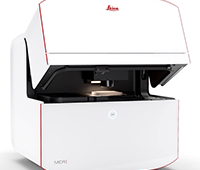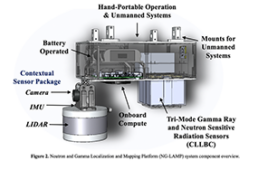 Asylum Research, an Oxford Instruments company, announces the release of the new GetReal Automated Probe Calibration feature. With one click, GetReal fully calibrates the atomic force microscope (AFM) probe sensitivity and spring constant, enabling more consistent, more accurate results. GetReal also protects the probe from damage that often occurs with conventional calibration methods, preserving the sharpest tip for the highest resolution imaging. Eliminating hassle and risk from the calibration process makes GetReal the obvious best choice. GetReal is included at no extra charge exclusively with Asylum Research MFP-3D and Cypher family AFMs. It is also available as a free software upgrade to most of our existing AFM customers.
Asylum Research, an Oxford Instruments company, announces the release of the new GetReal Automated Probe Calibration feature. With one click, GetReal fully calibrates the atomic force microscope (AFM) probe sensitivity and spring constant, enabling more consistent, more accurate results. GetReal also protects the probe from damage that often occurs with conventional calibration methods, preserving the sharpest tip for the highest resolution imaging. Eliminating hassle and risk from the calibration process makes GetReal the obvious best choice. GetReal is included at no extra charge exclusively with Asylum Research MFP-3D and Cypher family AFMs. It is also available as a free software upgrade to most of our existing AFM customers.
The feature was developed after findings by Asylum Research developers that many users were skipping an essential calibration step, either not calibrating at all, expressing the cantilever deflection in volts, or relying on inaccurate nominal values.
GetReal is based on two well-established spring constant calibration techniques, the thermal noise method and the Sader method. Though typically used independently to calibrate only the cantilever spring constant, Asylum Research co-founders and scientists Proksch and Cleveland, along with collaborators, recognized that the two methods could be used together to solve for both the cantilever sensitivity and spring constant.
GetReal is a highly automated implementation of this approach, requiring only that the user specify the probe model name and click one button to start the calibration. With no further intervention, the probe is fully calibrated and ready to use. It’s not only the simplest way to get calibrated, but it also helps protect sharp AFM tips from damage. Conventional methods require the cantilever sensitivity to be calibrated by pressing the tip against a hard surface. This can easily break the tip, reducing imaging resolution and compromising data integrity. GetReal is a completely non-contact, “no-touch” method that is inherently safe for the tip. These advantages come together with state-of-the-art accuracy, comparable to conventional methods.




